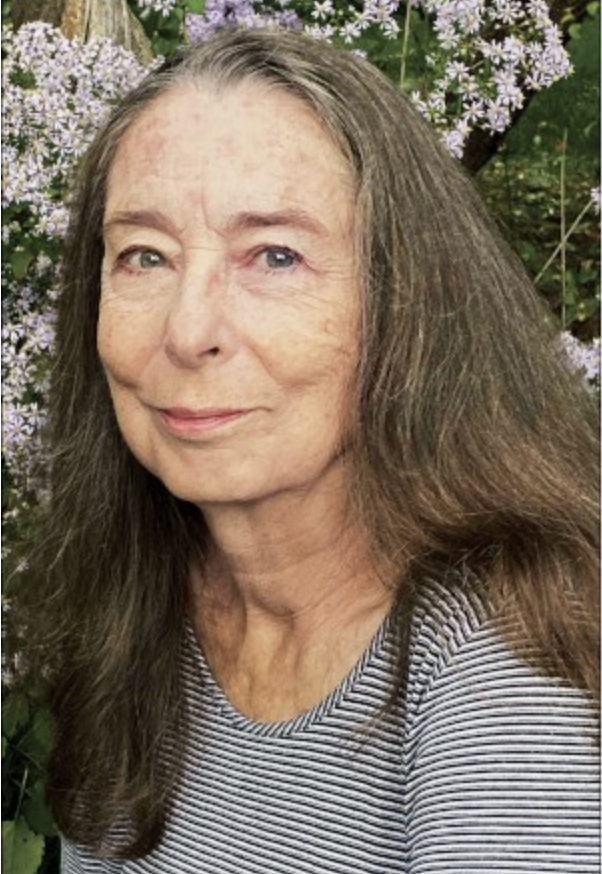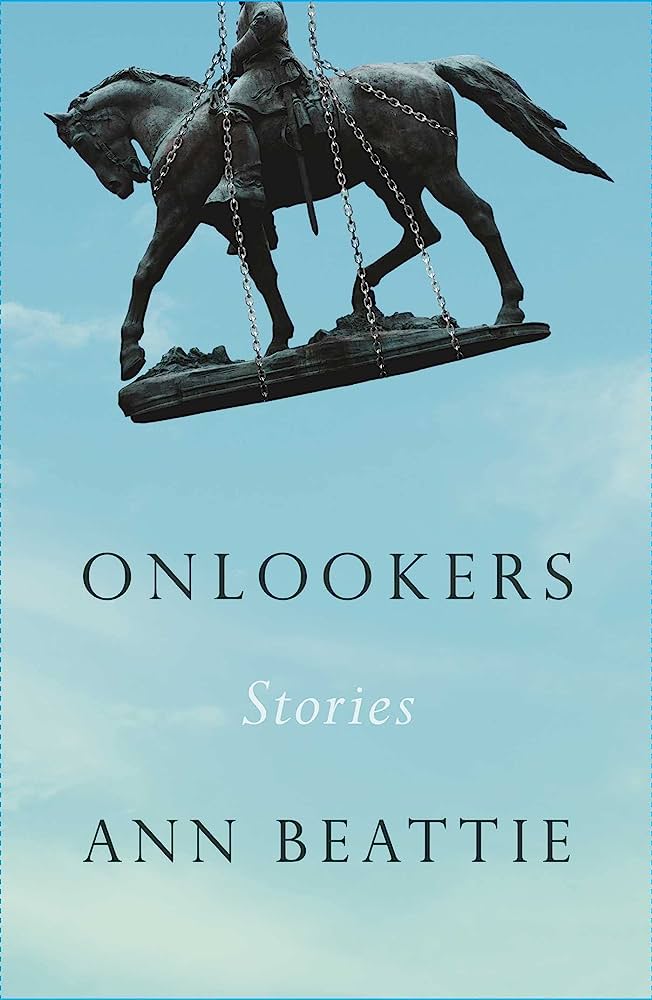In Ann Beattie’s Onlookers, the personal and the political aren’t as separate as its characters might like to believe. Set in present day Charlottesville, Virginia, the 2017 “Unite the Right” rally looms large in the public consciousness—so do the two most recent election cycles, the pandemic, and the intellectual battleground that the University of Virginia has become. Perhaps the most important image, recurring in nearly all of the collection’s loosely-connected short stories, is that of the toppled Confederate statues across the city. Yet despite the history happening all around them, the collection’s titular “onlookers” try to remain exactly that—distant, impartial, and removed from the reckonings happening all across their city and their country.
I spoke with Beattie about Onlookers, liberal bubbles, culture clash, and how to make your metaphors “jangle.”
Martin Dolan: I wanted to ask about the nature of writing a story collection centered around a particular place versus, say, a theme. I know you’ve written location-based collections before. What is it that attracts you to setting in fiction?
Ann Beattie: For one thing, I know Charlottesville very well. I first moved there in 1975; it was where my first job was right out of graduate school. I’ve been in and out of the city since I was 25 years old. Considering what happened there and considering my own long history with the place, I have a personal connection to it.
MD: So why a linked collection as opposed to a novel? Do you think a novel-in-stories lends itself to writing around a place or a moment versus something character or plot-driven?
AB: I wouldn’t say this is a conventionally linked collection of stories. They’re variations on a theme. You’re right that there are a geographic and thematic component, but there’s not any one real link. Traditionally, in novels-in-stories, people will have the same characters come up in story after story, and there’s some sort of trajectory. But I think this one dances around a bit more than those types of books—I wasn’t really going for that same sense of accumulation. The actual significance of recurring images, like the Confederate statues, actually vary story to story. There are common elements, but it’s meant to be more of a theme than about characters.

MD: I really love the scene in the story “Nearby,” where the two main characters are watching from their penthouse as the statues come down. And that comes back to the title of the collection—how these characters are adjacent to these protests and counterprotests, yet, for the majority of them, they’re passive. Do you think that makes for a more engaging story?
AB: I think those characters were right for those stories. They’re of a certain age, a certain social class. If you were up in that penthouse looking down, I’d assume you’d have a very different reaction to what was happening on the ground than the characters. Plus, in that story, the two characters of the husband and wife have different reactions, too. They were chosen on purpose to be perceivers, because I don’t think they’re representative of Charlottesville.
MD: For lack of a better term, it seemed like that sort of culture clash kept coming up story after story. Liberals and Conservatives, young and old, even transplants versus locals. Yet despite these characters being so different, the stories aren’t defined by that difference. It’s more of an uneasy coexistence.
AB: Yeah, that was intentional. Uneasy coexistence is right on target!
MD: These stories are all really grounded in the 2016-to-present moment—lots of references to politics and pop culture—but “Pegasus” is the lone Covid story. What was writing that like? Were there certain cliches you wanted to avoid?
AB: I do tend to write about what I’m immersed in, in terms of both my daily life and a day in the life of the nation. I spend the entire year of 2020 in Maine, because it was the safest place I had available, and I just couldn’t shake that idea of being locked away, of having to be masked. It was omnipresent in my mind.
MD: I think that story has a really great balance of sad scenes and moments of genuine levity. I know there’s humor in all your work, but do you think that its even more important in more socially or politically-grounded fiction?
AB: In general, I think that there is no such thing as ordinary life. There are certain things we have to accept, or learn to accept, but that also doesn’t mean we should lose our sense of humor—or our sense of anger! These are characters that are improvising. They can’t live their usual lives, either pre-pandemic or even before the changes in Charlottesville, yet they’re still moving forward. It’s not that in the past they were taking certain things for granted, or that they’ve become fundamentally different people, but rather that in new situations different aspects of themselves need to be called upon.
MD: You keep coming back to the language of “the bubble” to describe Charlottesville. All of your characters, from all their different perspectives, are alike in that they’re bemoaning that “the bubble” is about to burst (or has already). So, do you think that these bubbles are always doomed to pop? And is that even such a bad thing?
AB: I don’t look at things so directly. I don’t think that was the point of the book, per say, but by definition everything that is a bubble is vulnerable. At a literal level at least. We understand what the term means, but the characters in these stories don’t want to think that way.
What I liked about the image of the bubble is that it was a perfect metaphor. There’s a conflation of a bubble being both constricting yet impossible to not notice. It also resonates with the other image of the hot air balloon taking off. In fact, that’s exactly the image that comes back at the end—people looking down at the earth from the height of a balloon. I was trying to do something, in a literary way, in which two images superimposed over each other kind of jangle, rather than perfectly match. The idea is that you can think about having a different perspective, but then there is a totally different phenomenon of actually having that perspective. At the same time, the metaphor seems to me to be a uniting factor between two seemingly unrelating things—the hot air balloon and the person who has got a protective coating from living in their liberal town.









